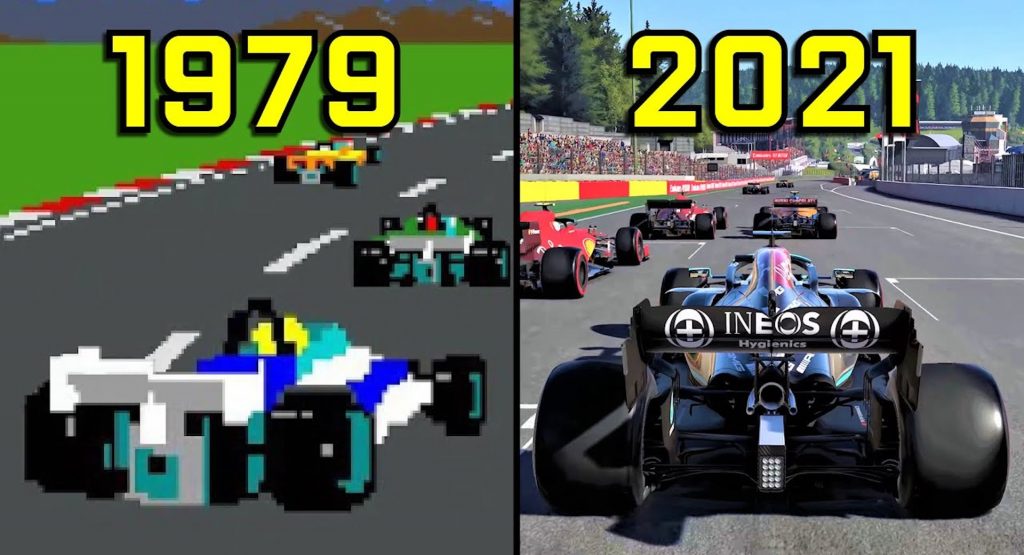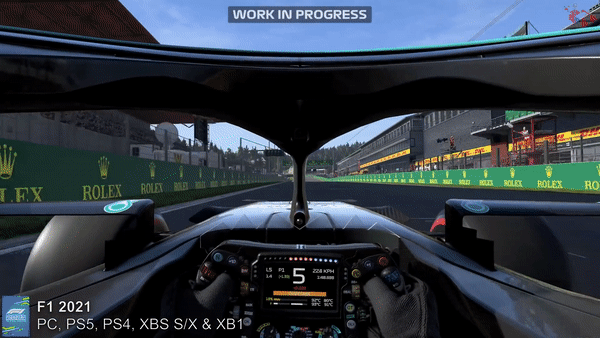We recently heard that the producer behind the critically acclaimed Ayrton Senna documentary is busy making an eight-part series charting the life of Bernie Ecclestone, the man largely responsible for making the F1 the slick, money-making circus it is today.
But available to watch right now on YouTube courtesy of Game Evolutions is a video charting the even more incredible changes F1 driving games have gone through over the same 40-odd years.
There’s no insightful commentary or talking heads in this film. It consists purely of sequenced snippets of gameplay footage, starting with 1979’s Monaco GP and culminating in what looks like TV footage of a recent race at Spa.
Well, it’s not TV footage at all; it’s actually the F1 2021 game that’s available on PC, PS5 and Xbox. We’ve become so accustomed to the photo-realism of modern games, their detailed shadows, the rain splashes on the camera, the rubber marks on the road, that it’s a shock to look back at how far we’ve come.
Related: Forza Horizon 5 Will Be Set In Mexico And Feature The AMG Project One
I remember being mesmerized by Pole Position in arcades when I was a kid in the 1980s, and not thinking the laughably named ‘Formula 1 Simulator’ was too shabby on my 48k Sinclair Spectrum. But seeing them now is like visiting an exhibition on how people lived in the Bronze Age.
Realism got a dramatic 3D boost in 1987 with the introduction of the Commodore Amiga and Atari ST computers, but it’s interesting to see that companies were still churning out top-down games well into the 1990s. And in a way, it’s those top-down games that seem to have aged better, because, unlike their first-person view contemporaries, you don’t look at them as a poor relation to modern 3D POV racing games.
Games like 1988’s Winning Run show how the processing power of the arcade machines gives them a clear advantage over home computer and console systems during the late 1980s and early 1990s, with smoother, more detailed graphics and more complex sound effects.
But by the second half of the decade a flood of new games capitalizing on the new generation of consoles, including the Sony PlayStation, and powerful home PCs, almost completely removes the need to visit an arcade to get your 3D F1 driving kicks. Two decades later, with huge televisions and the power of the latest PS5 and XBOX Series X, as well as gaming PCs, your living room is an arcade.
Just imagine if you could go back to 1979 and show F1 2021 on the PS5 to a 10-year kid throwing dimes into a Monaco GP cabinet. They’d look at you like you just invented fire. The question is, now that racing titles look and sound so realistic, and can even be played in VR, have we seen the last of the giant leaps in F1 gaming?






